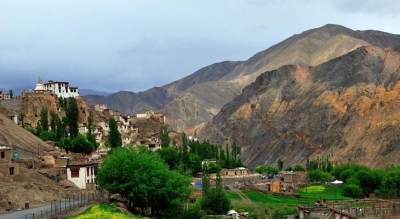
The Government wants to open the villages along the Line of Actual Control, that is the Chinese border, for tourists under the Vibrant Villages Programme, which was announced by Finance Minister Nirmala Sitharaman during the Budget presentation in February 2022. What is the Vibrant Villages Programme and what is its significance? Let’s find out.
Objectives of the programme
The Vibrant Villages Programme was announced in the Union Budget 2022-23 for the of villages in border areas, especially those on the northern border. The decision is aimed at improving infrastructure in villages along India’s border with China, in States such as Himachal Pradesh, Uttarakhand, Sikkim, and Arunachal Pradesh and the Union Territory of Ladakh. Border villages with sparse population often get left out from development plans. The new Vibrant Villages Programme is also expected strengthen the defence of the country.
Activities planned
Construction of village infrastructure, road connectivity. development of decentralised. renewable energy sources and direct-to-home access for Doordarshan and educational channels are some of the activities planned under this new programme. Housing facilities will be upgraded, tourist centres will be built, and support will be extended for the livelihood of people there. Besides setting aside funds for these activities, it is said that the existing schemes will be monitored constantly.
Why is it significant?
The announcement of the programme is significant in the wake of increasing Chinese presence along the border with India. China has been actively constructing infrastructure along the border since 2017, which has given rise to concerns here among the government and security forces. It is building border villages in Tibet in an attempt to strengthen its presence along the frontier. The Vibrant Villages Programme is “a counter to China’s model villages but the name has been carefully chosen so as to not cause any consternation in the neighboring country”.
In this context, it may be recalled that China and India have been engaged in a stand-off at several locations in Eastern Ladakh for the past two years. and that India lost as many as 20 soldiers in one of the worst clashes with the People’s Liberation Army of China in June 2020.
Picture Credit : Google




